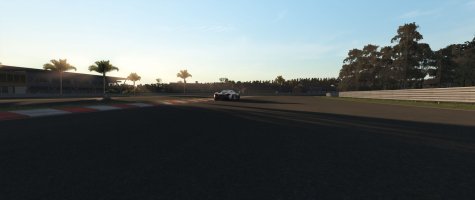Hi All
My rig is on wheels (and has to stay on wheels) and I also need to be nice to my neighbors.
Rig is on a tiled concrete floor, though I can put an ikea rug down as an option over rubber matts?

 www.bunnings.com.au
www.bunnings.com.au

 www.ikea.com
www.ikea.com
I have a buttkicker mini LFE on the pedal deck and one on the seat. (2 x mini LFE)
Behringer NX1000D Power Amplifier 1000W with DSP (overkill?)

NLR Next Level Racing GTtrack Simulator Racing Cockpit.
 nextlevelracing.com
nextlevelracing.com
I am thinking of using these to isolate the seat and pedals from the rig
to isolate the seat and the pedal deck from the frame and now considering the below to provide some immersion but also not annoy the neighbors.

 www.simracingstudio.com
www.simracingstudio.com
Any feedback would be great, I went down the hole of more transducers then thought of my neighbors.
My rig is on wheels (and has to stay on wheels) and I also need to be nice to my neighbors.
Rig is on a tiled concrete floor, though I can put an ikea rug down as an option over rubber matts?
Search - Our range

STOENSE Rug, low pile, off-white, 133x195 cm - IKEA
STOENSE Rug, low pile, off-white, 133x195 cm. The thick, soft-spun pile is all about comfort, combined with gentle colours and a light sheen that bring harmony to the room. Large floor? Place several rugs together – the thick pile conceals the edges.
I have a buttkicker mini LFE on the pedal deck and one on the seat. (2 x mini LFE)
Behringer NX1000D Power Amplifier 1000W with DSP (overkill?)

Behringer NX1000D Power Amplifier 1000W with DSP
Behringer NX1000D power amplifier feature the latest Class D technology combine with leading DSP control to deliver the power your system needs while remaining lightweight. Perfect for DJs, venues, and bands.
djcity.com.au
NLR Next Level Racing GTtrack Simulator Racing Cockpit.
Next Level Racing GTtrack | Next Level Racing
Next Level Racing GTtrack | Advanced Simulation Products
I am thinking of using these to isolate the seat and pedals from the rig
to isolate the seat and the pedal deck from the frame and now considering the below to provide some immersion but also not annoy the neighbors.

Elite SRS ShakeCombo (includes SRS License for Bass Shaker) | simracingstudio
Save when you buy the SRS Elite ShakeCombo Kits include the following: 1x ShakeBox Elite 1x ShakeSeat 1x ShakePedal 1x ShakeBack Extra Layer of Padding (removable) on ShakeSeat SRS License for Shaking All cables Just plug-and-race Shakers tuning guide...
 www.simracingstudio.com
www.simracingstudio.com
Any feedback would be great, I went down the hole of more transducers then thought of my neighbors.
Last edited:












